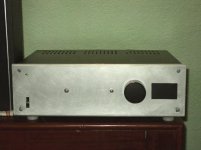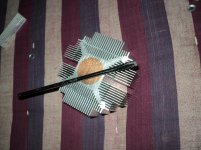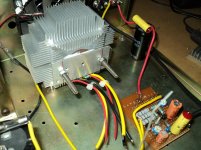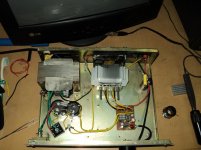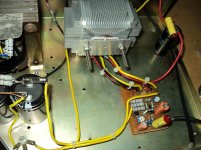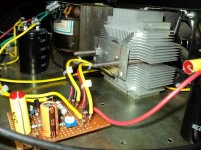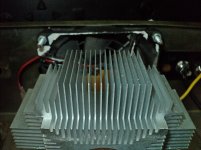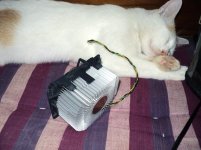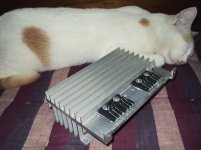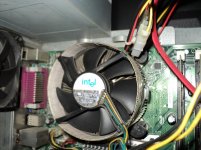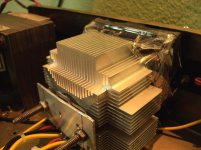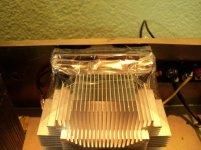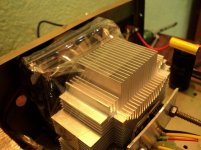Behold a useful "tool" for each DIYer who takes his hobby seriously! A different control unit for preamplifiers and integrated amplifiers!
Here is the full article: welcome to* The Electronic Audio Labs web magazine
Nice work (as usual) Fotios!


I have just realized that we would need to have the same 100k log dual pot, but I have just seen too that it has already a 100k alps.
For the pinout I am aware that we may have to isolate all 6 pads and cut the necessary traces, for optimal isolation.
Fotios, the pot is not intended to work directly with the LDR, but with the boards Uriah is offering for the simpler LDR vol. control or for the Lighter note. They need a 100k pot, so adding this external one should do the job.
Yes, you are right regiregi22, i was very hasty reading the related thread. Sorry for this. I don't know how much reliable are those Silonex optocouplers with resistive output (not simple LDRs). Please advice me.
As for the pinout of ALPS mot pot, all pins are separated on the PCB layout of volume control unit. You can download schematics, layout and PCB artwork from my web page.
Thanks for your kind words.
Fotios
I congratulate you, dear my friend!
Gyuri
Thanks X 10^6 Gyuri!
Fotios
Nice work (as usual) Fotios!

Thanks dudaindc! You are (as usual) very polite!
Fotios
Very nice project Fotios!
Many thanks Bonsai. Since you are professional, with big experience in electronics design, your opinion is always of big importance to me.
Fotios
Now I have been able to finish your article. Very detailed instructions you have written, all I may ask is if you are willing to provide some PCBs for this design. It seems that taking my time can reach to succesfully finish a project like that. I haven't neither written never any code for an IC.
kind regards,
Regi
kind regards,
Regi
Now I have been able to finish your article. Very detailed instructions you have written, all I may ask is if you are willing to provide some PCBs for this design. It seems that taking my time can reach to succesfully finish a project like that. I haven't neither written never any code for an IC.
kind regards,
Regi
Hi regiregi22
Sorry for the delayed reply, just today i had the time to look at these projects with opto-resistors. Since the led is isolated from ldr inside Silonex, the job can be done directly from the microcontroller with the aid of an external quad comparator (e.g. LM324). There is no need of using motor pots, trimmers etc. We need just one output of MCU to produce a PWM, and 4 to work as RAMP generators. By modulating the pulse width, we can obtain the desired voltage variation in the output of the four comparators. If we have 4 Silonex opto-resistors connected at the outputs of comparators, we can match them very easy by changing the width (period) of each RAMP thru the software of MCU. That is simply an idea and nothing more.
As for PCBs, of course i have my supplier, simply i must place an order for 30 boards at least, to drop down the cost in 12 euro / piece.
Fotios
First try on LatFET and CPU HS
First time making a Lateral FET SE Class-A amp and also first time using a CPU heatsink. Dissipating about 90watts the heatsink seems ok for this monoblock. Plan to make another one like this soon for a stereo setup. The circuit is a combination of Zen and Death of Zen using an N channel FET for the power device and a PNP power darlington as the nonmodulated constant current source. The heatsink is probably an AMD one. Had to cut four of the radiator fins for the mounting bolts.
First time making a Lateral FET SE Class-A amp and also first time using a CPU heatsink. Dissipating about 90watts the heatsink seems ok for this monoblock. Plan to make another one like this soon for a stereo setup. The circuit is a combination of Zen and Death of Zen using an N channel FET for the power device and a PNP power darlington as the nonmodulated constant current source. The heatsink is probably an AMD one. Had to cut four of the radiator fins for the mounting bolts.
Attachments
Last edited:
well, your PC heatsinks could make a very different design
with the copper plug in the middle, definately interesting
but I suppose not the cheapest either ?
I dont know how effective they are
but without a fan, I reckon a standard F5 would need one heatsink for each device
just to have a figure
with the copper plug in the middle, definately interesting
but I suppose not the cheapest either ?
I dont know how effective they are
but without a fan, I reckon a standard F5 would need one heatsink for each device
just to have a figure
For me it was the cheapest heatsink for the performance. Bought it from the used items market here in Kolkata for just Rupees 100(~$2.5). The copper plug is the main attarction as you said. Performance wise this heatsink runs a lot cooler at half the fan speed than the older and larger heatsink I previously used with fan at full speed and more noise(first pic below). I still have another intel cpu cooler and plan to use it for the other channel(second pic). Fortunately this one has the fan intact which was not the case for the AMD hs.
From my experience these heatsinks must have a fan running at slow speed if used for dissipation of more than 10watts or so, as the thin gaps between the fins seems to make it hard for the hot air to escape fast. With a 12v fan running at 6V these heatsinks are unbeatable IMHO. And one heatsink per device would be an excellent or perhaps the perfect setup, provided there is good ventilation in the chassis.
(cat for scale )
)
shaan
From my experience these heatsinks must have a fan running at slow speed if used for dissipation of more than 10watts or so, as the thin gaps between the fins seems to make it hard for the hot air to escape fast. With a 12v fan running at 6V these heatsinks are unbeatable IMHO. And one heatsink per device would be an excellent or perhaps the perfect setup, provided there is good ventilation in the chassis.
(cat for scale
shaan
Attachments
Cat is nice!
Heatsink pic 2 are not for AMD is for Intel!
Regards zeoN_Rider
........ I still have another intel cpu cooler and plan to use it for the other channel(second pic).......
The AMD heatsink is here in this thread -> http://www.diyaudio.com/forums/soli...ur-solid-state-pics-here-163.html#post2362978
Last edited:
So at what scale the cat is? I have seen really big cats out there 
From my experience in silent pc contructions, with this kind of computer heatsinks and this case form factor, is it advisable to place some kind of conduct to guide airflow right through the fins. Just put two pieces of plastic of a size of approx 100x100 on both sides of the heatsink. Try it and you will be surprised of the lowly fan speed you can set without getting a hot heatsink temp.
you can adquire too a low noise fan, look in the previous link I gave from silent pc, in this section.
Regards,
Regi
From my experience in silent pc contructions, with this kind of computer heatsinks and this case form factor, is it advisable to place some kind of conduct to guide airflow right through the fins. Just put two pieces of plastic of a size of approx 100x100 on both sides of the heatsink. Try it and you will be surprised of the lowly fan speed you can set without getting a hot heatsink temp.
you can adquire too a low noise fan, look in the previous link I gave from silent pc, in this section.
Regards,
Regi
So at what scale the cat is? I have seen really big cats out there
She's cute, big, annoyed and angry.
Scale for scale.

From my experience in silent pc contructions, with this kind of computer heatsinks and this case form factor, is it advisable to place some kind of conduct to guide airflow right through the fins. Just put two pieces of plastic of a size of approx 100x100 on both sides of the heatsink. Try it and you will be surprised of the lowly fan speed you can set without getting a hot heatsink temp.
you can adquire too a low noise fan, look in the previous link I gave from silent pc, in this section.
Regards,
Regi
Using the same idea for two years. And yes you are right, it really works both low CPU temp and noise. Although I put the surroundings around the fan, not the sink.
shaan
Attachments
She's cute, big, annoyed and angry
There's redheads for ya.
(Mm, what a hotty, reminds me of a young damsel i chased around the block)
Yeah, that will work with an open-frame fan, but with the one you actually have, what you need to cover are the heatsinks. Carton works really good too.Using the same idea for two years. And yes you are right, it really works both low CPU temp and noise. Although I put the surroundings around the fan, not the sink.
- Home
- Amplifiers
- Solid State
- Post your Solid State pics here
